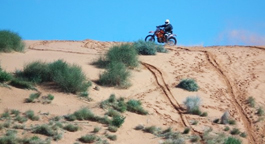Australian Desert Facts
The climate in the deserts we are crossing can vary dramatically. It is not uncommon for sub-zero temperature at night (as low as minus 8 degrees) and up to 48 degrees during the day.
Sourced from http://www.outback-australia-travel-secrets.com/australian_deserts.html the following provides more information about the Australian Deserts;
- Australia receives so little rainfall that about 35% of Australia is classified as a desert.
- 70% of the country is classified as arid or semi-arid, which means it gets less than 500 mm of rain a year.
- That makes Australia the driest inhabited continent on Earth. Only Antarctica is drier.
- Only 3% of the Australian population live in the “dry” 70% of the continent, the rest of our population is concentrated on the coast.
- Like most major deserts across the world the Australian deserts can be found around a certain latitude (roughly 30° north/south of the equator) where the weather phenomena create a dry climate.
- Hot moist air rises at the equator. It cools as it moves north or south, the moisture condenses and falls as abundant rain onto the tropical regions.
- Finally the now dry air sinks over the subtropical regions, warming as it sinks, which encourages evaporation, and voila: you get more evaporation than rain, perfect conditions for the formation of a desert.
Bigbore Blog
- 12 Deserts Crossed 14 October, 2010
- Back home 14 October, 2010
- The way home – Coober Pedy to Birdsville 14 October, 2010
- The way home – The Googs Track to Coober Pedy 14 October, 2010
- The way home – Margaret River to Ceduna 14 October, 2010
- Riding East 17 September, 2010
- 9 Deserts crossed 16 September, 2010
Copyright © 2013 bigbore.info. All Rights Reserved. www.bigbore.info Site Organised by Tony Tregurtha. Website Design and Development by Brenden Bates - ThoughtBalloon








